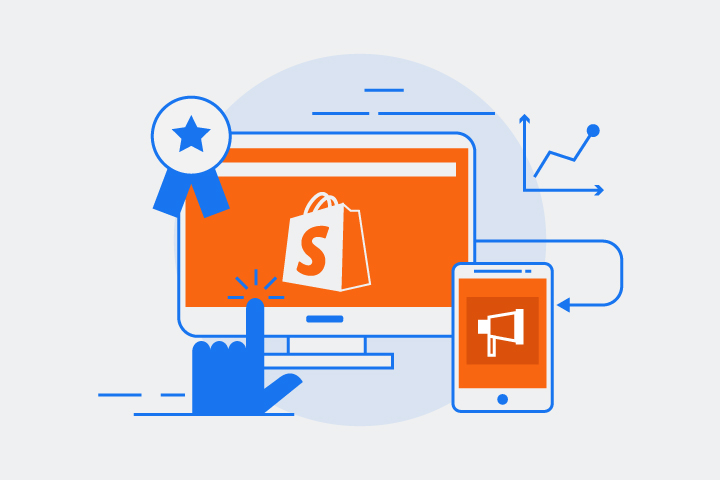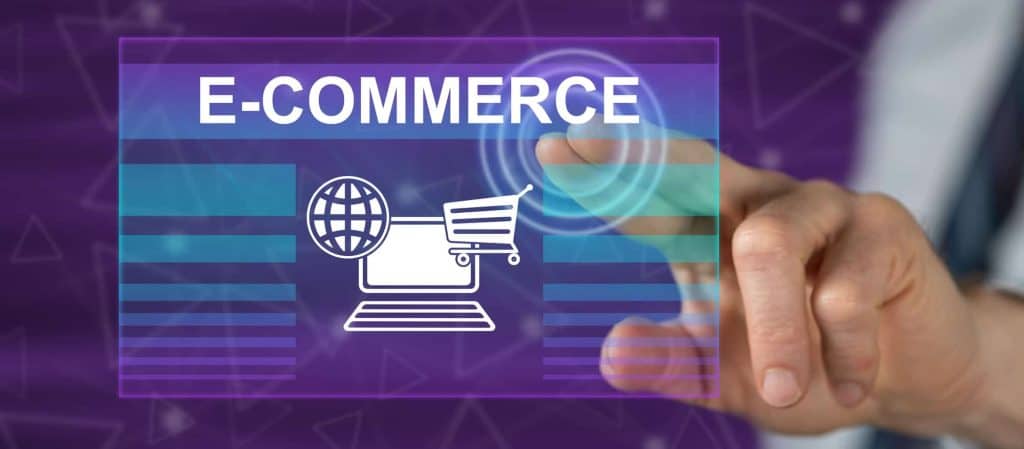
In the dynamic world of e-commerce, the race to deliver exceptional customer experiences is heating up. Two revolutionary technologies, Artificial Intelligence (AI) and Augmented Reality (AR), are at the forefront of transforming how we shop online. Let’s dive into how these innovations are personalizing and enriching the shopping journey for consumers everywhere.
Have you ever wondered how some online stores seem to know exactly what you’re looking for? Welcome to the era of AI-powered personalization. This technology is reshaping the e-commerce landscape by offering tailored shopping experiences like never before. From product recommendations to customer support, AI analyzes your browsing habits and purchase history to predict what you might like next.
For instance, Amazon’s recommendation engine, powered by complex algorithms, can account for up to 35% of the company’s revenue, according to McKinsey. These personalized suggestions are not just a hit or miss; they’re based on analyzing vast amounts of data to understand consumer preferences at an individual level.
Moreover, AI chatbots are revolutionizing customer service. They’re available 24/7, providing instant support, answering queries, and even assisting with purchases. This level of personal attention was once only possible in physical stores, but AI is bringing it to the digital world.
Imagine trying on a pair of sunglasses or visualizing a piece of furniture in your living room before making a purchase. Augmented Reality (AR) is making this possible, offering a try-before-you-buy experience that’s changing the way we shop online. This immersive technology allows consumers to see and interact with a product in their own space, significantly reducing the uncertainty that often accompanies online shopping.
Retail giants like IKEA and Sephora are leading the way. IKEA’s Place app lets you visualize how furniture looks in your home, adjusting for size, color, and lighting. Sephora’s Virtual Artist app, on the other hand, allows customers to try on makeup virtually. These applications are not just fun; they’re practical, boosting consumer confidence and reducing return rates.
Statistics show the impact AR can have. According to Shopify, interactions with products having AR content showed a 94% higher conversion rate than products without AR. This significant figure highlights AR’s potential to transform browsing into buying, making it a game-changer for the e-commerce industry.
Incorporating AI and AR into your e-commerce strategy doesn’t have to be daunting. Here are a few steps to get started:
The future of e-commerce lies in creating personalized, immersive shopping experiences. By leveraging AI and AR, businesses can connect with their customers in new and exciting ways. So, are you ready to transform your online store with these cutting-edge technologies?
The e-commerce landscape is evolving, and businesses are continuously seeking innovative ways to meet the ever-changing preferences of modern consumers. Enter the concepts of hybrid commerce and headless commerce – two approaches that are reshaping how businesses sell online and offline. Let’s delve into these models and discover how they’re offering unparalleled flexibility and enhancing customer experiences.
Hybrid commerce is all about blurring the lines between physical and digital shopping experiences. But what does this look like in practice? Imagine browsing through products on a brand’s app, trying them out via augmented reality, and then picking up the selected items from a nearby store. This seamless integration of online and offline channels caters to the modern shopper’s desire for convenience and personalization.
One standout example of hybrid commerce in action is Nike. The sportswear giant’s app allows customers to reserve shoes for a fitting in-store, participate in unique events, and even unlock exclusive products. This approach not only enhances the shopping experience but also strengthens the bond between the brand and its customers.
The stats back up the move towards hybrid models. According to Harvard Business Review, omnichannel customers spend an average of 4% more in-store and 10% more online than single-channel customers. This indicates the significant potential of hybrid commerce to boost sales and customer loyalty.
Headless commerce might sound like something out of a sci-fi novel, but it’s actually a groundbreaking approach that offers businesses the ultimate flexibility in how they present their products across different platforms. In a headless commerce setup, the front end (what the customer sees) is decoupled from the back end (where the data is stored), allowing brands to quickly adapt their content and layout without overhauling their entire system.
But why is this beneficial? For starters, it means businesses can easily tailor their online presence for various devices and platforms, from traditional websites to mobile apps and even smartwatches, without compromising speed or functionality. This agility is crucial in a digital landscape where consumer preferences can shift overnight.
Look at Zara, a pioneer in leveraging headless commerce. By decoupling their front end and back end, they’ve managed to launch new collections and promotional campaigns at lightning speed across multiple channels, significantly enhancing the customer experience and driving sales.
Here are a few key benefits of headless commerce:

As the digital world evolves, so does the way we pay and subscribe to services online. Have you ever stopped to consider the vast array of payment options available at your fingertips or the increasing prevalence of subscription services in every industry? Let’s dive into how these trends are not just changing the game for consumers but also offering businesses new avenues for growth and customer engagement.
Gone are the days when credit cards and PayPal were your only options for online shopping. The digital age has ushered in a plethora of payment methods, catering to every preference and need. From digital wallets like Apple Pay and Google Wallet to cryptocurrencies such as Bitcoin and Ethereum, the options are vast and varied. But one of the most notable trends in recent years is the rise of “Buy Now, Pay Later” (BNPL) services.
BNPL services like Afterpay, Klarna, and Affirm allow consumers to purchase products immediately but spread the cost over several installments, often without interest. This flexibility can boost sales and average order values, as it makes higher-priced items more accessible to shoppers. According to a report by Worldpay from FIS, BNPL payments are expected to grow at an annual rate of 28% through 2024, signaling their rising popularity among consumers.
But why incorporate these diverse payment methods into your e-commerce platform? The answer is simple: consumer preference. Offering a variety of payment options can significantly enhance the customer experience, reduce cart abandonment rates, and open up your market to international customers who may prefer local payment methods.
Subscription services are another trend revolutionizing industries far beyond magazines and streaming services. From meal kits and cosmetics to clothing and software, subscriptions are offering consumers a new way to shop and businesses a steady revenue stream.
The benefits of subscription models are multifold:
But what’s driving this shift towards subscriptions? In a world where convenience is king, consumers are drawn to the ease of having products and services delivered to their doorsteps on a regular schedule. Moreover, the element of surprise and discovery in curated subscription boxes can enhance the shopping experience, making it more than just a transaction.
Consider the success of services like Spotify for music, Adobe Creative Cloud for software, and Blue Apron for meal kits. These companies have not only capitalized on the subscription model to offer convenience and value but have also used it to build strong, lasting relationships with their customers.
In today’s world, where consumers are more conscious than ever about the impact of their purchases, businesses are stepping up to the plate by focusing on sustainability and ethical practices. But what does this shift mean for the e-commerce landscape, and how are companies implementing these changes? Let’s dive into the green wave sweeping across the digital marketplace.
The push towards sustainability is not just a trend; it’s a movement. Consumers are actively seeking out brands that prioritize eco-friendly practices and products, from packaging to the supply chain. This shift in consumer behavior is prompting businesses to rethink their operations, with many making significant strides in reducing their environmental footprint.
For example, Patagonia, a brand synonymous with outdoor apparel, has long been a pioneer in sustainability. Their commitment to using recycled materials and repairing products to extend their lifespan has set a benchmark in the industry. Additionally, the rise of platforms like Etsy, which emphasizes handmade and sustainable goods, showcases the growing market for eco-conscious products.
But it’s not just about the products themselves; how companies operate matters too. According to a Nielsen report, 73% of global consumers are willing to change their consumption habits to reduce their environmental impact. This statistic underscores the importance for businesses to adopt:
Adopting these practices not only helps the planet but can also boost brand loyalty and customer trust, key ingredients for long-term success in the digital age.
The rise of ethical consumerism has also spotlighted the importance of supporting independent businesses that prioritize ethical practices and autonomy. In an era dominated by e-commerce giants, there’s a growing desire among consumers to support smaller entities that align with their values.
This trend is evident in the popularity of platforms like Shopify, which empowers independent sellers to reach a global audience while maintaining control over their operations. Additionally, initiatives like Small Business Saturday encourage consumers to shop locally and support community businesses, further emphasizing the value placed on ethical and independent enterprises.
But why are consumers gravitating towards these businesses? The reasons are manifold:
For businesses, this shift presents an opportunity to highlight their ethical practices and the stories behind their products, creating a deeper connection with their customers. By focusing on authenticity and transparency, companies can distinguish themselves in a crowded marketplace and build a loyal customer base.
In an age where consumers expect their online orders to arrive at lightning speed, optimizing e-commerce operations for fast delivery and efficient fulfillment has become a top priority for businesses. Let’s explore how the evolution of distribution channels and innovations in fulfillment planning are setting new standards for e-commerce efficiency.
The digital marketplace is no longer just about selling; it’s about delivering – quickly and efficiently. As consumer expectations for fast delivery have skyrocketed, businesses have been compelled to rethink their distribution strategies. The advent of new marketplaces and the integration of advanced delivery options have significantly impacted how consumers shop and what they expect from online retailers.
A study by PwC found that nearly 88% of consumers are willing to pay for same-day or faster delivery. This willingness underscores the importance of efficient distribution channels in satisfying customer demand and staying competitive in the e-commerce landscape.
Behind every click to purchase is a complex web of fulfillment operations that ensure products move from warehouse to doorstep as efficiently as possible. The introduction of forward deploy fulfillment centers (FDFC) and other technological advancements are streamlining this process, making it faster and more cost-effective.
For example, Amazon’s use of robotics and AI in its fulfillment centers has set a new benchmark for the industry. These innovations allow Amazon to promise and deliver rapid shipping times, a key factor in their customer satisfaction and loyalty.
Implementing these advanced fulfillment strategies requires investment in technology and infrastructure, but the payoff can be significant. Businesses that can deliver products quickly and efficiently gain a competitive edge, attracting more customers and fostering loyalty with the promise of convenience and speed.

In the fast-paced world of e-commerce, leveraging the power of marketing automation and data analytics is not just smart; it’s essential. These tools not only streamline operations but also provide deep insights into customer behavior, enabling more effective and personalized marketing strategies. Let’s dive into how automation and analytics are revolutionizing e-commerce marketing.
Imagine having a team that works around the clock, optimizing your marketing efforts without ever taking a break. That’s what marketing automation can do for your business. By automating repetitive tasks such as email marketing, social media posting, and ad campaigns, businesses can focus on strategy and creative endeavors, leaving the nuts and bolts to the machines.
But it’s not just about efficiency; it’s about personalization at scale. With automation tools, you can:
For instance, Netflix’s recommendation system sends personalized emails based on viewing history, keeping subscribers engaged with new content suggestions. According to Campaign Monitor, personalized emails deliver six times higher transaction rates, showcasing the impact of tailored marketing efforts.
Data analytics transforms raw data into actionable insights, enabling businesses to understand their customers better and make informed decisions. Instant analytics and machine learning algorithms analyze customer data in real-time, providing insights into shopping patterns, preferences, and potential pain points.
Here’s how businesses are using analytics to boost their sales strategies:
For example, Amazon’s machine learning algorithms analyze billions of data points to predict customer buying habits, optimize product recommendations, and manage stock levels efficiently. This level of insight is a game-changer for sales optimization.
The power of analytics lies in its ability to turn data into a competitive advantage. Consider these statistics:
Incorporating analytics and automation into your marketing strategy allows you to:
In the ever-evolving digital marketplace, two pivotal trends are reshaping the e-commerce experience: the growing emphasis on consumer privacy and the expansion of multichannel customer support. As we delve deeper into what these trends mean for businesses and consumers alike, it becomes clear that understanding and adapting to these changes is not just beneficial but essential.
In recent years, consumer awareness and concern over privacy have soared, leading to significant changes in how businesses collect, use, and manage data. With regulations like the GDPR in Europe and the CCPA in California setting new standards, the implications for e-commerce businesses are profound.
A study by Cisco found that 84% of consumers value their privacy and want more control over how their data is used. For e-commerce sites, this means implementing user-friendly privacy controls and ensuring that data protection is at the forefront of their operations.
The digital age has transformed customer service expectations. Today’s consumers demand fast, efficient, and accessible support across various platforms. Whether it’s social media, email, chat, or phone, providing seamless support across all channels can significantly enhance customer satisfaction and loyalty.
For example, Zappos, an online shoe and clothing retailer, is renowned for its exceptional customer service. By offering support through multiple channels and focusing on customer satisfaction above all, Zappos has built a loyal customer base and a strong brand reputation.
Incorporating these elements into your e-commerce strategy can be a game-changer:
As the digital landscape evolves, so does the way consumers search for products online. Enter the realms of voice and visual search, two rapidly growing technologies reshaping the future of e-commerce discoverability. Let’s explore how these innovations are not just changing search behaviors but also providing new opportunities for businesses to connect with their audience.
Voice search, powered by AI assistants like Siri, Alexa, and Google Assistant, is becoming an integral part of our daily lives. With the convenience of hands-free searching, consumers are increasingly using voice commands to shop online, creating a burgeoning market segment ripe for the taking.
According to a report by eMarketer, nearly one-third of the US population uses voice search features monthly, highlighting the growing importance of integrating voice search optimization into your SEO efforts.
Visual search takes the user experience to a new level by allowing consumers to search with images instead of words. Platforms like Google Lens and Pinterest Lens are leading this visual revolution, enabling users to snap a photo of an item and find similar products online instantly.
Visual search is not just a gimmick; it’s a powerful tool for enhancing the customer experience. Retailers like ASOS and IKEA have already embraced visual search technology, offering customers innovative ways to discover products. With Pinterest reporting over 600 million visual searches every month, the potential for increased conversions through visual search is immense.
In the ever-evolving landscape of e-commerce, the integration of social commerce and the strategic use of zero-party data are becoming pivotal in crafting personalized shopping experiences. These elements not only enhance customer satisfaction but also drive sales by tapping into the vast potential of social media platforms and respecting consumer privacy. Let’s explore these transformative trends.
Social commerce represents the fusion of e-commerce with social media, turning platforms into direct sales channels. This trend capitalizes on the social aspect of shopping, making it a shared, engaging, and seamless experience. Here’s why it’s becoming a game-changer:
Platforms like Instagram and Facebook have introduced features like shoppable posts and marketplace functionalities, making it easier for brands to sell directly to consumers. According to a report by eMarketer, social commerce sales in the US are expected to reach $36 billion by the end of 2021, underscoring its growing impact on consumer purchase behavior.
While personalization is key to winning over customers, the rising concern for privacy cannot be overlooked. This is where zero-party data comes into play. Unlike first-party data, which is collected through interactions with a brand’s website or app, zero-party data is information that customers intentionally share with a brand. It includes preferences, purchase intentions, and how they want to be recognized by the brand. Here’s how businesses can leverage zero-party data:
Utilizing zero-party data enables brands to:
For example, Sephora’s “Beauty Insider” program encourages customers to share their beauty preferences in exchange for a tailored shopping experience and rewards. This approach has led to increased customer loyalty and sales.

As the digital age continues to evolve, the future of e-commerce looks both exciting and unpredictable. With new technologies emerging and consumer behaviors shifting, businesses must stay agile and forward-thinking. Let’s explore how you can prepare for the future by anticipating trends and employing best practices.
Staying ahead in e-commerce means keeping a pulse on emerging trends and technologies. Here’s what to look out for:
Understanding and integrating these trends into your strategy can give you a competitive edge. For instance, IKEA’s AR app, which lets users visualize furniture in their home, not only enhances the shopping experience but also leverages cutting-edge technology to drive sales.
Q: How can I improve my e-commerce site’s user experience (UX)? A: Focus on simplicity and speed. Ensure your site is easy to navigate, mobile-friendly, and loads quickly. High-quality images and detailed product descriptions can also enhance the UX.
Q: What strategies can increase customer retention? A: Personalization is key. Use data analytics to offer personalized recommendations and deals. Implementing a loyalty program can also encourage repeat business.
Best Practices:
Let’s not forget about security. In an era where cyber threats loom large, ensuring your e-commerce platform is secure is non-negotiable. Regularly update your software, use secure payment gateways, and educate your customers on safe online shopping practices.
Embracing these best practices and staying attuned to the shifting sands of e-commerce can position your business for success in the future. Are you ready to take these steps and thrive in the ever-changing digital marketplace?
